The Importance of Nanogrids in Low-Carbon Residential Communities
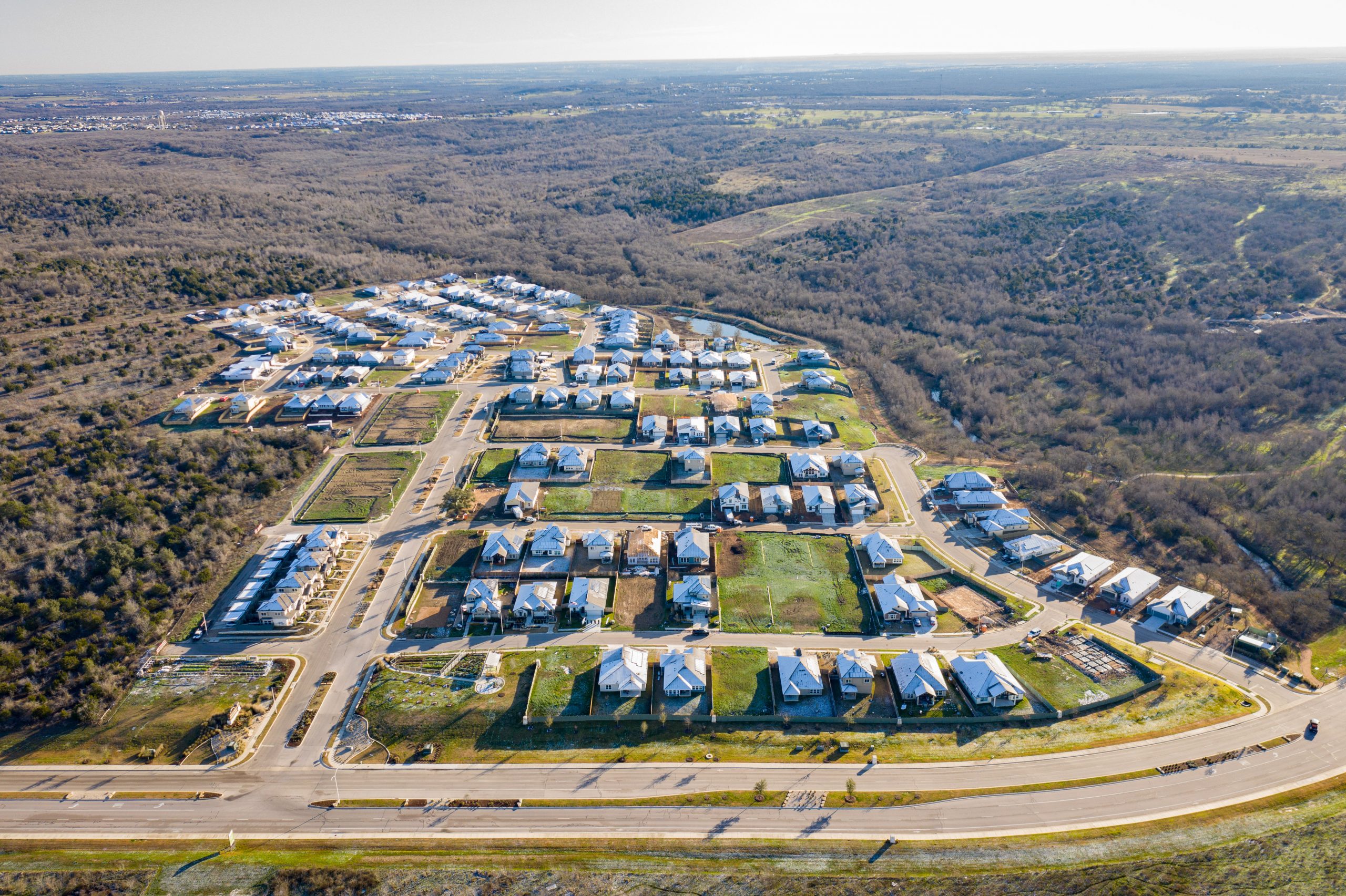
Figure 1: The Whisper Valley development. Image courtesy of EcoSmart and Jay Hubert, photographer.
Whisper Valley is a large residential development in Texas, USA, that combines a community-wide geothermal energy grid with solar photovoltaic (PV) generation and advanced battery storage and management technologies to deliver zero-energy-capable homes.1 This development, and others, signals a fundamental change to energy supply for domestic consumers. Industry forecasts suggest that, by 2030, consumers will be investing more money in grid-edge devices (solar PV, batteries, charging stations, electric vehicles and smart controls) than electric utilities will invest in power generation and electricity grids. Its involvement with projects such as Whisper Valley shows how Shell is seeking to influence and enable this shift.
Introduction
Shell is building a global, lower-carbon, integrated power business as part of its wider ambition to be a net-zero-emissions organisation by 2050, or sooner. In 2016, Shell established a New Energies business to focus on new fuels for transport and power. The business includes renewables such as wind and solar power, new mobility options such as electric vehicle charging and hydrogen, and a global power trading business. Shell is also investing in nature-based solutions that protect or redevelop natural ecosystems such as forests, grasslands and wetlands to offset emissions from hard-to-abate sectors of the energy system.
In 2019, Shell acquired sonnen, a leader in smart energy storage systems and innovative energy services for households. The German-based company has been pioneering in the energy market by combining its technology with new business models to build decentralised, clean and controllable energy infrastructure. The sonnen home battery, for example, pairs with solar PV, generators and the local grid to store excess energy and optimise its use by powering homes at night and keeping the lights on and the solar system working during a grid outage. Beyond individual homes, sonnen is also building virtual power plants2 worldwide that enable entire communities to become cleaner and more energy independent and even to provide services to support the local utility grid.
Shell had an instrumental role in EcoSmart Solution (EcoSmart) becoming an independent company through a joint venture formed with Taurus Investment Holdings in April 2019. EcoSmart helps builders to produce affordable, zero-energy-capable homes. Its solutions include energy-efficient insulation, rooftop solar PV power (with the option to add a sonnen battery), energy-saving appliances and home-automation products. The key element in this development is the GeoGrid, a shared, geothermal exchange loop field energy system that EcoSmart owns and operates, that delivers substantial savings in heating and cooling costs.
Ideas into action: Welcome to Whisper Valley
Large-scale residential and mixed-use master planned communities, which can include thousands of new homes, are common in the USA. EcoSmart and sonnen are working together to offer zero-energy-capable solutions for such developments. Whisper Valley in Austin, Texas, which will cover 2,000 acres (Figure 1), is an EcoSmart energy infrastructure development project where EcoSmart is the green energy service provider to all the homeowners in the community. sonnen is being introduced to the solution package to provide customers with the additional benefits of energy storage for managing the solar energy and providing resiliency to power outages.
There are numerous challenges to minimising the environmental impact of energy use in residential developments. These include maximising the energy efficiency of buildings and increasing the proportion of energy demand met from on-site renewable sources. Promoting the widespread use of renewable energy requires a new approach to power infrastructure: an approach that must be cost-effective in the current market conditions and sufficiently flexible and scalable to meet future needs.
Whisper Valley features a distinct energy sharing infrastructure with a geothermal exchange loop field (a GeoGrid system) that provides the bulk of thermal energy for heating and cooling. Unlike geothermal power generation that uses high temperature sources, typically from deep locations within the earth, for electricity generation, geothermal exchange loops in combination with ground-source heat pumps provide a highly efficient, renewable energy technology that “pumps” thermal energy from the earth to buildings in the winter and reverses the flow in the summer.
Greenfield site construction starts with the installation of horizontal infrastructure, such as roads and utilities, across the development. Installing a GeoGrid system is relatively simple and cost-effective at this stage. In contrast, retrofitting geothermal systems to existing properties is a significantly more expensive and complex installation process.
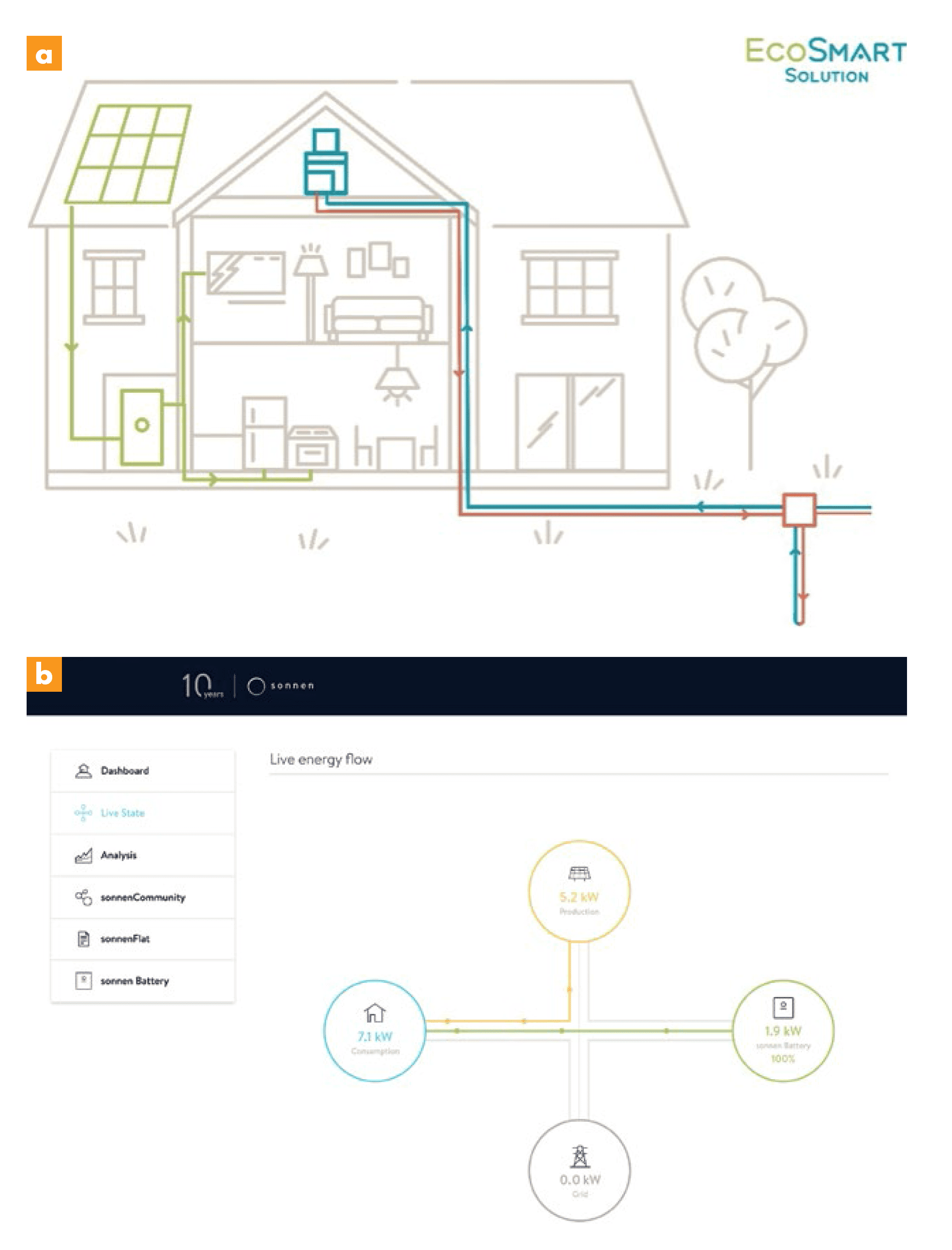
Figure 2 (Click Image to View Larger): Combining a geothermal exchange system or GeoGrid and rooftop solar systems (a) with safe, clean energy storage and energy management software (b) creates an optimal energy balance.
Combining a GeoGrid system with energy-efficiency measures, such as ultra-efficient appliances and smart thermostats, can reduce energy requirements by about 65% [Ref 1, Ref 2]. The addition of rooftop solar panels for electricity generation and sonnen’s intelligent home battery system to manage electricity use (Figure 2) reduces or eliminates net electricity energy consumption from the grid.
The sonnen residential batteries are designed to be installed at the battery owner’s home; to charge using their on-site PV generation; to use excess energy to offset their peak consumption or even run their house nearly independently from the grid; and to provide islanding capabilities to protect that house from power outages. Beyond individual residential nanogrids, sonnen has pioneered the development of virtual power plant software that enables these distributed batteries to work together as a “hive” to decongest the grid and decarbonise energy production. This combination of battery installation in individual homes and aggregation by way of cloud-based software enables truly scalable management of renewable resources such as solar with the implementation of community virtual power plants.
A pathway to scalable development
As of August 2020, Whisper Valley had 161 occupied homes and another 39 under construction as part of the full 237 homes in Phase 1. The infrastructure for Phase 2 is complete and this will see 267 more homes; phases 3 and 4 will add a further 373 homes. Estimates of aggregate power generation assume that each home will have 4–6 kWp (peak) of rooftop PV. Assuming an average of 4.5 kWp per roof in Phase 1, the community generates a total of 724 kWp from the 161 currently operating houses.
One of the most important requirements for any new energy system is that it is easily scalable to meet demand. The total build-out (estimate of maximum potential development) at Whisper Valley is 5,000 single-family homes and about 2,500 apartments. In addition, the community will feature two million square feet of commercial space along with schools, community buildings and even a wastewater treatment plant, all with the potential to produce as much electricity as they use. Beyond Whisper Valley, the EcoSmart zero-energy-capable model enables significant scalability, as geothermal exchange technology has widespread application across the USA.
EcoSmart and sonnen are applying lessons learned from Whisper Valley to other low-carbon, smart-energy developments. sonnenCommunity projects that combine solar, storage and energy efficiency are already under way with various home builders and developers in Arizona, California, Florida, Illinois and Utah, thus demonstrating the growing demand for cost-effective, clean-energy and lower-carbon living. EcoSmart has prospective projects in Texas at the feasibility study stage and has engaged with developers throughout the coastal and western US states. Effective integration of the system components is crucial for creating
a zero-energy-capable home. Whisper Valley incorporates a host of advanced designs and technologies and a new development philosophy that enable its homeowners to reduce their carbon footprints dramatically.
Technical solution design
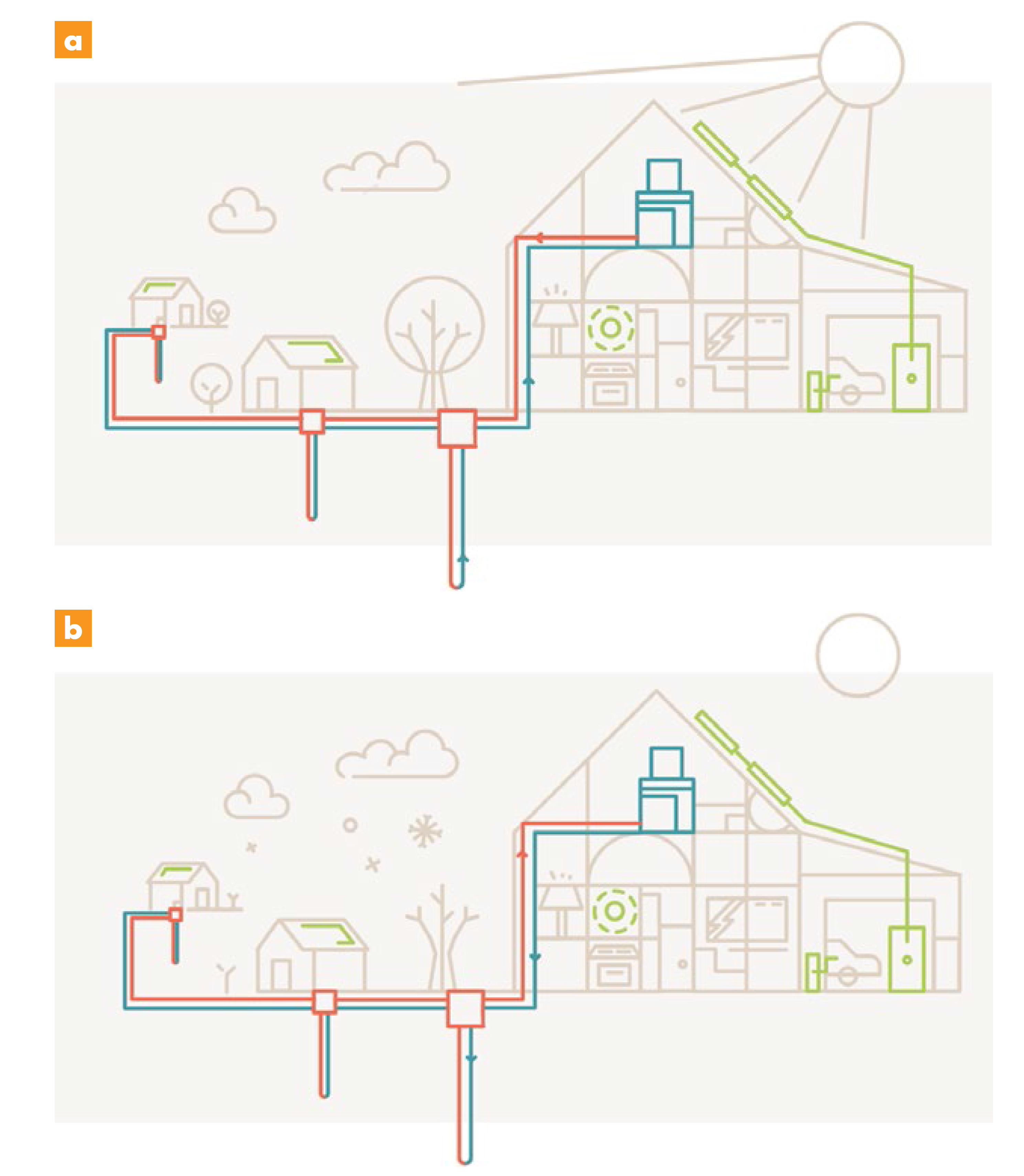
Figure 3 (Click to View Larger): The EcoSmart GeoGrid district-wide geothermal exchange system links hundreds of individual ground loops to create a highly efficient, integrated thermal management system during summer (a) and winter (b).
The heart of the EcoSmart programme at Whisper Valley is the GeoGrid system (Figure 3). For this, EcoSmart uses a polyethylene product with a 50-year warranty for the underground vertical and horizontal geothermal exchange piping. Each home is equipped with a crosslinked-polyethylene, vertical, double U-bend ground loop and a highly efficient geothermal heat pump from either Bosch Thermotechnology or Enertech. To take advantage of the earth’s 22–23°C year-round temperatures in Austin, the vertical ground loop is inserted into a 350-ft-deep borehole. Water passing through this pipe to the heat pump absorbs or emits heat energy, depending on the season.
What makes Whisper Valley’s geothermal system innovative is that every vertical ground loop is networked through more than five miles of piping to form a unique GeoGrid system with an energy centre that provides central pumping, ancillary heat rejection through cooling towers and advanced monitoring and control systems. The GeoGrid network provides resiliency for individual borehole failures and diversifies the individual peak thermal demands across the community such that an individual home’s geothermal capacity does not need to be sized to the home’s peak load. The monitoring and control system, coupled with ancillary cooling towers, enables the entire system to share and optimise thermal energy.
In Austin, the peak energy demand occurs in summer because of the high cooling demand and evaporative cooling towers will augment the ground loop for heat rejection. For Phase 1, EcoSmart has installed only one of the two planned towers because the combined thermal performance of the boreholes has exceeded the original projections and the thermal benefit from the miles of horizontal district pipes and the vertical boreholes. Interestingly, it is reasonably straightforward to model the thermal dynamics of either a vertical or a horizontal loop thermal heat exchanger, but there are no standard modelling tools that can model the combined effects of both in a hybrid system such as the GeoGrid system. As EcoSmart gains empirical data from the operation of the GeoGrid system, its engineers will be better able to predict the thermal dynamics from the GeoGrid system’s horizontal district lines and, thus, inform the GeoGrid design for future phases.
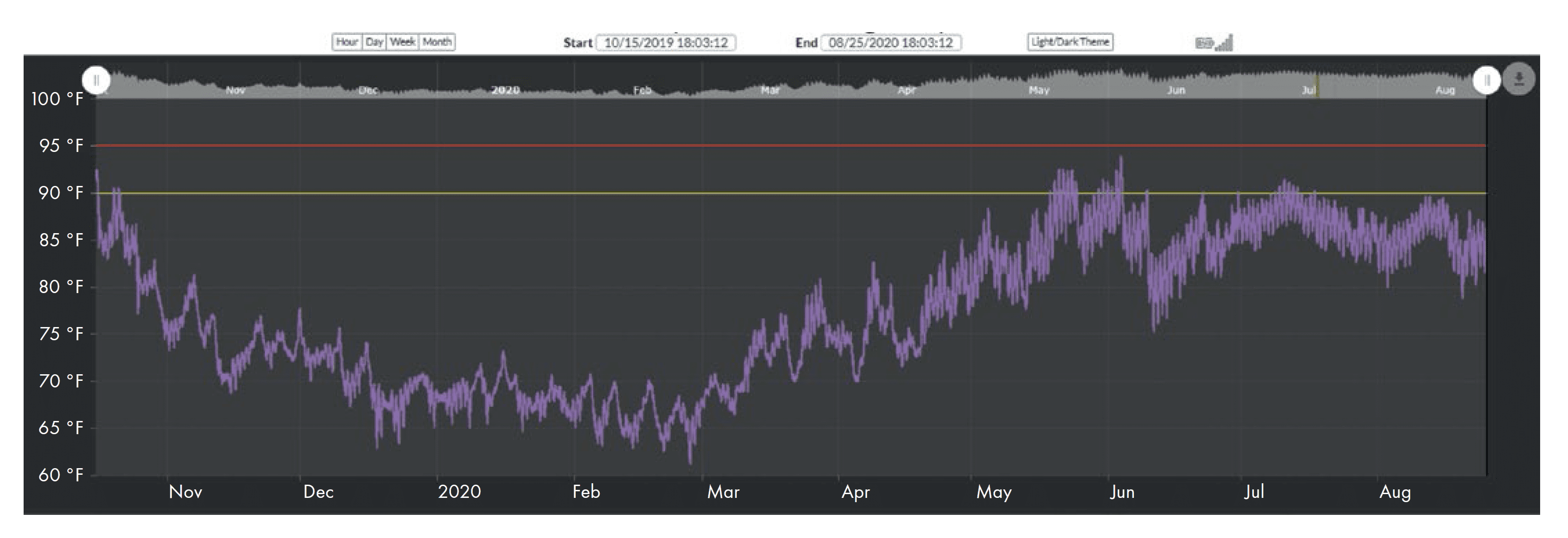
Figure 4 (Click to View Larger): Seasonal temperature profile in the GeoGrid system showing the water temperature leaving the pumphouse.
The GeoGrid system makes it easy to deal with seasonal temperature variations. The GeoGrid system uses the horizontal district lines and a cooling tower to extract heat from the boreholes during the late winter and spring (late December through early March), i.e., it reduces the geothermal water temperature to below the long-term average earth temperature (22–23°C), so there is ample thermal capacity to absorb the heat from cooling loads during the summer and early autumn. During the summer, heat rejection from the homes’ ground-source heat pumps gradually increases the borehole temperatures. The GeoGrid monitoring system (Figure 4) enables operational control of the GeoGrid system and the cooling tower to ensure that the geothermal water does not exceed the maximum temperature and to promote efficient operation of the ground-source heat pumps.
In Whisper Valley, rooftop, solar PV systems are installed on every home. These rooftop solar systems are custom sized to each home to optimise the offset of electrical consumption and maximise savings. The metric EcoSmart has adopted is the Home Energy Rating System (HERS), as defined by RESNET. This is an industry-standard system of benchmarking the projected energy performance of a residential home by modelling the energy efficiency of the home and offsetting electrical consumption with any on-site generation, such as solar PV. EcoSmart targets a HERS rating of 25 or lower to size the energy infrastructure (PV) for each home in the residential network. A HERS rating of 25 indicates that the home would consume 75% less energy than a standard, conventionally built, heated and cooled new home.
In the absence of battery storage, the electricity produced by the rooftop solar system serves the immediate energy demand of the home and feeds any excess electricity (net of the required load flows) to the grid. The current solar feed-in tariff from the local electric utility provides a fixed rate of about $0.06/kWh exported to the grid. This rate is only two-thirds of the retail electricity rate for energy consumed from the grid. Therefore, homeowners would much prefer the energy they generate from their solar systems to be “self-consumed” and not just exported to the grid when it is generated, thereby making the sonnen home battery solution an attractive option.
With the integration of a sonnen home battery, the excess solar electricity is stored for use later in the day or when the home needs it most. Homeowners at Whisper Valley will have a choice of sonnen products, depending on how much storage capacity they require, including the eco 10 (8-kW/10-kWh), eco 17.5 (8-kW/ 17.5-kWh) or ecoLinx 20 (8-kW/20-kWh) models. The home battery, which is generally installed in a climate-controlled garage or utility room, uses lithium–iron–phosphate batteries that are safe, long-lasting and 100% cobalt-free. The sonnen battery has a minimal risk of thermal runaway, which makes it ideal for residential use, unlike batteries used by other manufacturers. The specific sonnen home battery installed at Whisper Valley offers an industry-leading warranty of 15,000 charge cycles or a 15-year lifespan and an expected 248 MWh of lifetime energy throughput.
The sonnen home battery offers resiliency for homeowners through a built-in, automatic transfer switch that isolates the home’s electrical system from the grid (in under 100 ms with the ecoLinx system). EcoSmart uses the term nanogrid for this operating mode in residential applications. By pairing the sonnen battery with the rooftop solar installation, the system can power essential loads in the home, most importantly, lights, plug loads, refrigeration, heating, ventilation, some air conditioning and Wi-Fi, until the grid comes back on.
If the solar generation is sufficient for size of the home loads, the battery enables the home to continue independent operation for many hours or days after a grid failure, as the rooftop solar panels will recharge it. When operating in a normal, daily, grid-tied mode, the sonnen system uses built-in algorithms to maximise self-consumption of locally generated energy and minimise pulling of energy from the grid at peak times. The sonnen ecoLinx system also offers an optional upgrade that enables homeowners to pair the intelligent battery with controllable breakers and to manage energy use dynamically through a third-party, home automation platform.
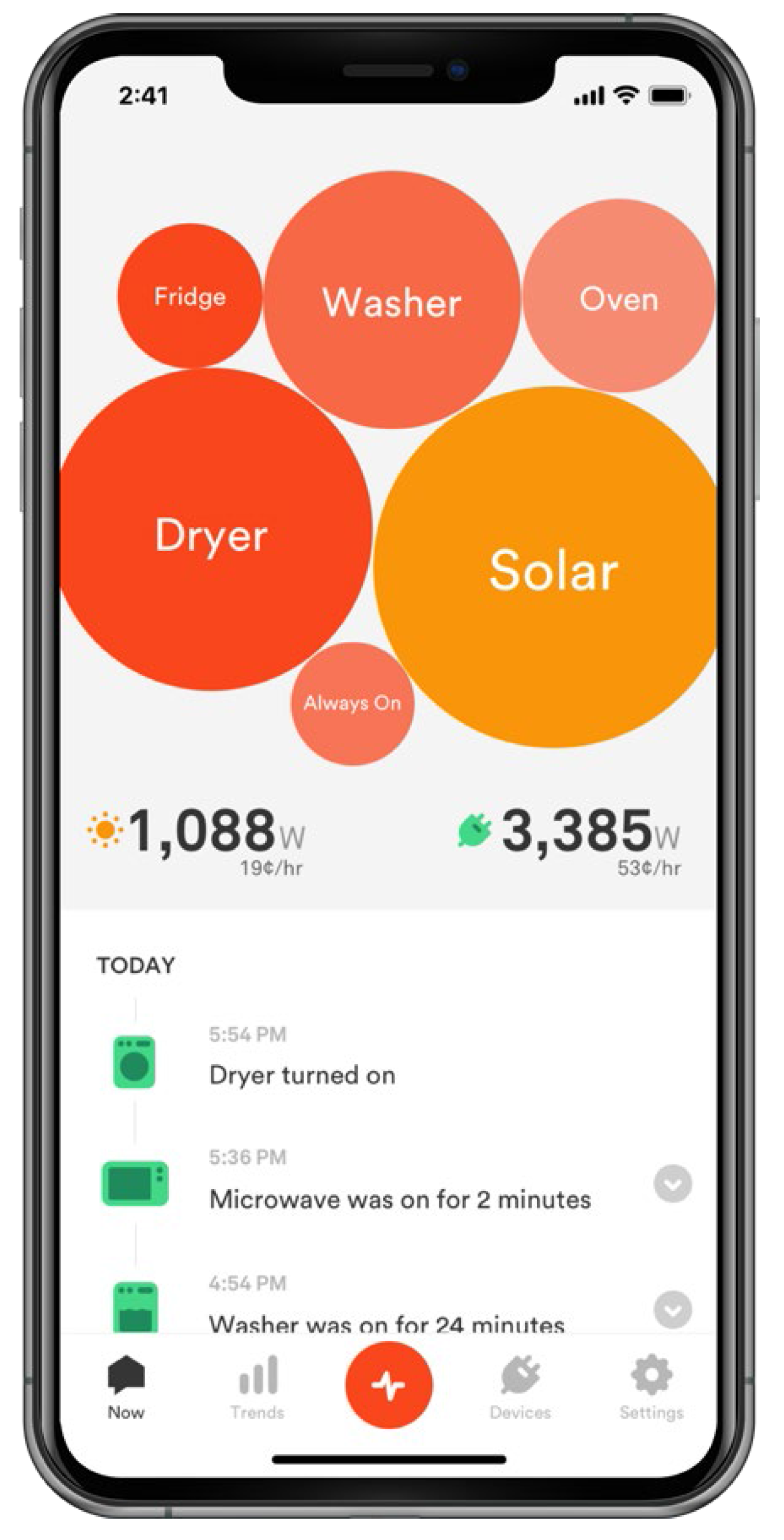
FIGURE 5 (Click to View Larger): The Sense energy monitoring application. Image courtesy of Sense Labs.
The EcoSmart home also includes other energy-efficiency and smart-home technologies. The Google Nest family of products is designed to optimise energy use according to each homeowner’s schedule. The Works with Nest program serves as the portal to smart homes and can integrate more than 10,000 products. The homes also feature high-efficiency appliances, including refrigerators and dishwashers, designed to minimise energy demand. All EcoSmart homes are now provided with an energy monitoring platform from Sense (Figure 5) that enables homeowners to gain visibility of their energy use and take control over how they allocate their energy expenditure.
Energy storage use cases: Typical operation versus grid outage
Figure 6 illustrates one full day of system operation. During the early morning hours, the blue spikes reflect the air conditioning of the ground-source heat pump cycling on and off. For the first few hours, the battery discharges to meet this load until it reaches the preset 20% reserve state of charge at about 05:00.
When the sun starts to shine on the solar array at about 07:00, the PV system begins generating energy. Initially, all the solar energy offsets the home’s load but soon it starts charging the sonnen battery (green overlay) until its state of charge reaches 100% at about 15:30. From then, all the excess solar energy is exported to grid at the utility’s feed-in tariff rate. Finally, at about 18:30, the solar generation falls below the home’s energy consumption, so the sonnen battery begins to discharge (red overlay) the energy stored earlier to meet the home’s load; minimal energy is imported from the grid until the battery storage is depleted the following morning.
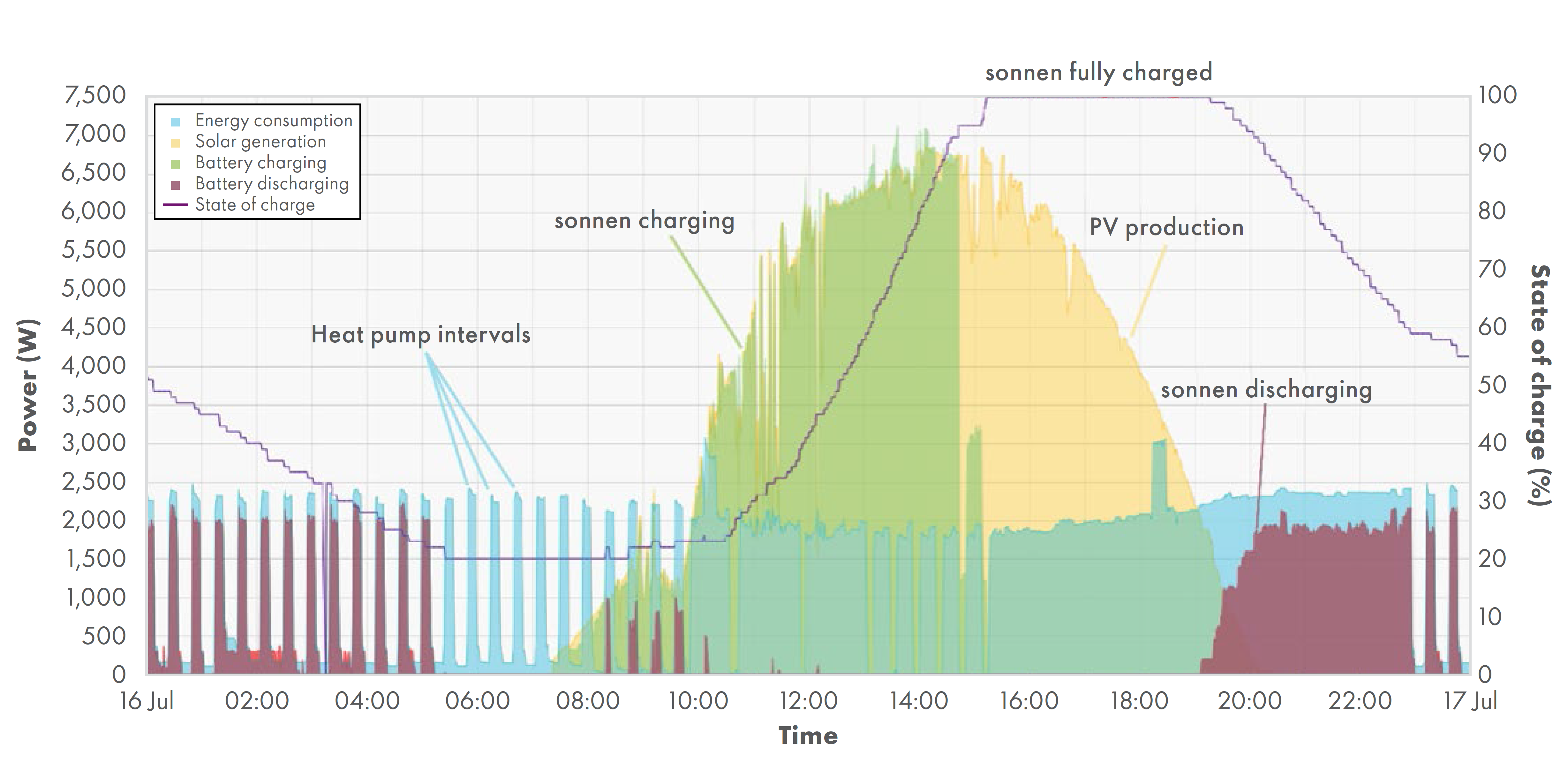
FIGURE 6 (Click to View Larger): A day in the life of the sonnen energy storage system nanogrid. Source: sonnen customer portal.
This daily operation of the sonnen storage system results in the home loads using significantly more energy from the home’s solar system, thereby reducing reliance on the grid. In this illustration, 80% of the sonnen battery capacity was used to store solar energy during the day for use during the afternoon and evening, i.e., about 16 kWh of additional PV production was used to offset the home’s energy load than would have been the case without the storage system.
This sonnen system has an adjustable preset minimum battery state-of-charge limit of 20% to provide reserve energy in case of a grid outage.
Figure 7 illustrates a day when the electric grid was intentionally disconnected from the home at 12:00. The solar system immediately automatically turns off as a protective measure, as per grid regulations, and the sonnen battery begins to discharge to satisfy the home’s energy load. This switchover between the utility grid power and the sonnen nanogrid power occurs in less than 100 ms and noticeable by home residents only as a transient light flicker. After a 5-min quiescent period, the solar system turns back on to continue to supply power to the nanogrid. Once the solar system charges the sonnen battery to near full charge, the solar system turns off (15:00) to prevent overcharging of the storage system. Once the sonnen storage system reaches the lower state-of-charge threshold, the solar system comes back on (16:00) to power the essential loads and recharge the battery.
Benefits
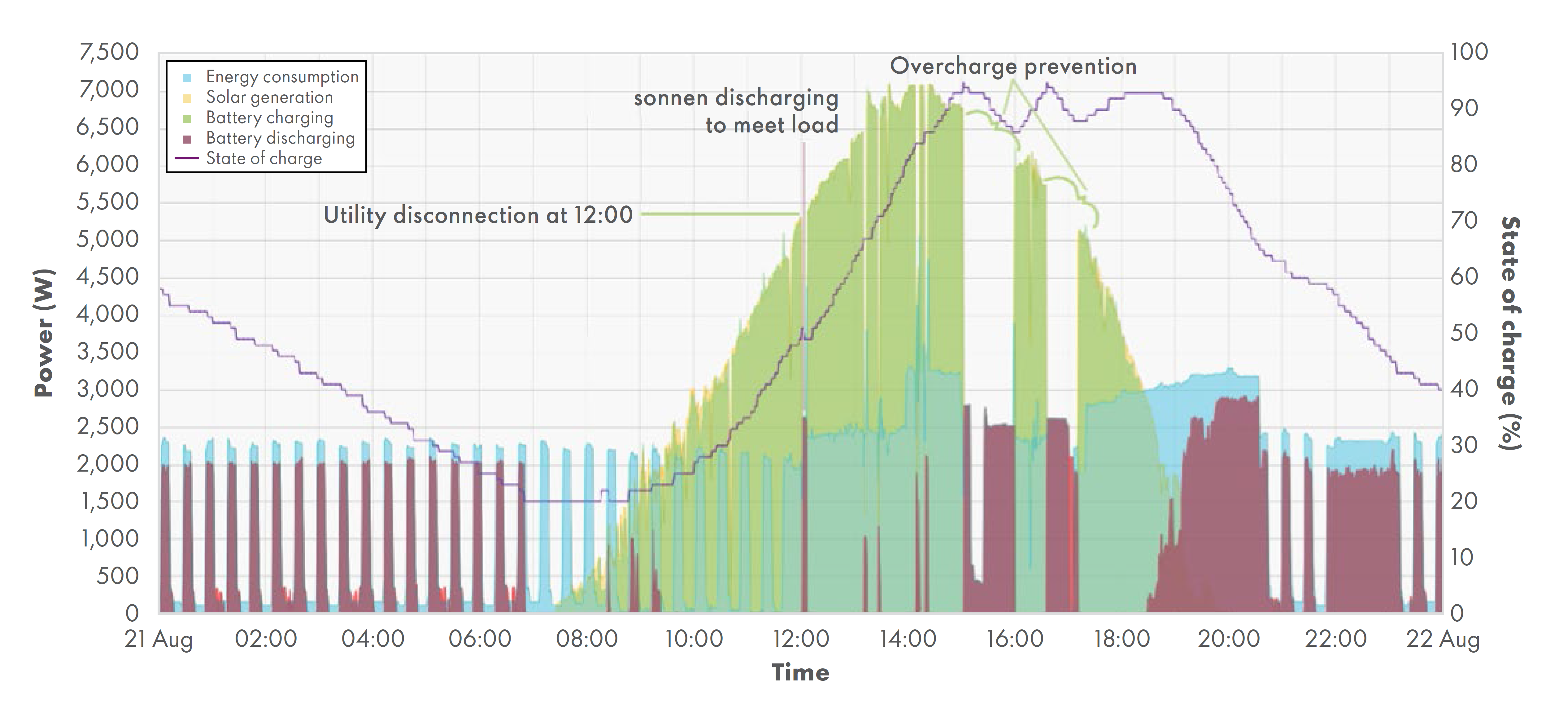
FIGURE 7 (Click to View Larger): What happens during a power outage. Source: sonnen customer portal.
For residents, the key benefit is having an affordable, comfortable, quiet (in the absence of conventional heating, ventilating and air conditioning units) and sustainable home that delivers a high degree of energy independence and resilience when there are grid outages. Consuming low-carbon electricity (using stored solar energy during evening peak times and storing excess energy overnight to power a home during morning peaks) is also increasingly important to many people. Some sustainable developments have been challenged as being too expensive, too complicated and too time-consuming; Whisper Valley is helping to change this perception.
A certified and independent home energy rating professional assesses the energy efficiency of each home in the energy storage system programme. The U.S. Department of Energy statements note that a geothermal heat exchange system with ground-source heat pumps provides the highest efficiency for the heating and cooling systems available. The RESNET HERS rating system illustrates the impact of the GeoGrid system working in tandem with ground-source heat pumps to deliver HERS ratings before the inclusion of solar in the low 50s (about 50% lower energy consumption than conventional new homes). There is a fixed monthly geothermal service fee of about $60, which the projected energy savings exceed. The solar PV system on the roof typically brings the HERS rating to below 25, thereby further reducing the home energy consumption to less than 25% of a conventional code compliant home. The sonnen system provides power backup and energy services that go beyond these estimates.
In Whisper Valley, homeowners are currently eligible for tax incentives on their home’s solar PV system plus sonnen battery, and the geothermal exchange equipment on their property. This includes the ground-source heat pump (including installation) that drives the geothermal heating and cooling system in each home. The current federal tax incentive allows homeowners to write off 26% of the value of both systems, which could amount to $6,000–15,000+, depending on home, PV and storage system sizes.
The city of Austin has some of the most stringent building codes in Texas and the USA, which can be very demanding to meet. For builders, one main benefit of the Whisper Valley approach is that it provides a well-defined path to meeting or exceeding these standards and an advantage over traditional new builds. Developers can use the new approach to create sustainable communities without any upfront infrastructure costs for themselves or their builders. The capital costs for GeoGrid infrastructure and EcoSmart-provided components within the home are added to the home sales price and amortised over the lifetime of the mortgage. The housing sector in and around Austin is strong and zero-energy-capable, carbon-neutral homes are selling points for developers.
For utility companies and city authorities, the Whisper Valley design offers a sustainable way to integrate and manage intermittent renewables on the grid with the inclusion of the PV system plus battery technology to reduce the scale of transmission and distribution investment, and provide new grid services and a green energy service.
Energy storage and community grids: Key enablers for electrification
For most households, the delivery and billing of energy has not changed in decades: the resident holds a contract with an electricity supplier and is billed for the kilowatt hours consumed at the address. Fundamental changes across the entire energy system are transforming this familiar arrangement. The emergence of numerous, smaller and distributed points of generation enabling consumers to become producers is the most obvious change.
Many companies are now entering the newly established market space between conventional utility suppliers and their customers. At sonnen, for example, the founding vision was for every household to become a clean, small power plant. Over the past decade, the company has evolved from being a manufacturer of home batteries to being an energy supplier and dispatch hub for a new, clean and decentralised energy system. Today, there are more than 60,000 homeowners worldwide who power their homes with sonnen and renewable energy, and there are numerous sonnen virtual power plant models that are enabling a scalable clean energy future for the world.
Looking to the future
EcoSmart and sonnen are co-operating with other Shell companies to develop a fully integrated electrification strategy for the residential development market. One obvious area for inclusion is e-mobility charging. Home is often the most convenient and cost-effective place for private customers to recharge their cars, as it is where most cars are parked overnight. The EcoSmart team is exploring electric vehicle charging solutions with Greenlots, a fully owned Shell subsidiary, to provide smart charging stations on the development.
An efficient and widely available home charging infrastructure will encourage consumers to switch to plug-in hybrid and fully electric vehicles; this is a large potential market.
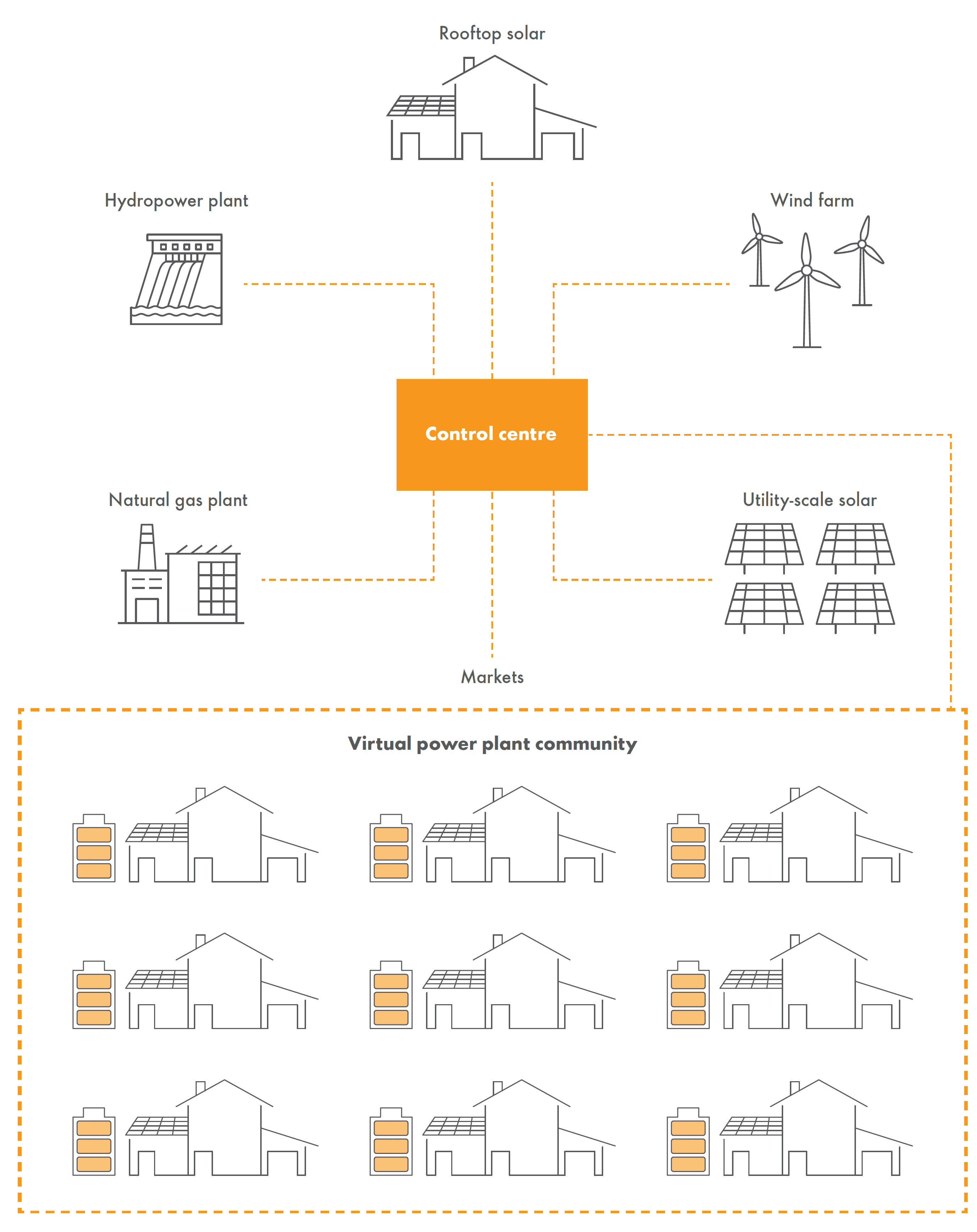
FIGURE 8 (Click to View Larger): The sonnen virtual power plant technology enables individual residential sonnen home batteries to be linked together via software to provide fleets of batteries that can be managed as grid assets. Source: sonnen.
Today, sonnen is actively deploying technologies and services that establish its position as the grid services provider of the future. These include the sonnen virtual power plant, a service that combines the capabilities of individual sonnen systems through a simple internet connection and sophisticated virtual power plant management software (Figure 8). By controlling the conditions and timing of each system storing solar energy and discharging it on demand, the sonnen virtual power plant acts like a single large battery. The virtual power plants can provide solar and battery services to both individual homes and the local utility grid, thereby managing capacity and reducing wear and tear on the grid infrastructure. The virtual power plants also provide energy to support grid resiliency and lower costs for all ratepayers in addition to serving the home’s energy needs. sonnen is also providing grid stability services to utilities and partnering with Shell Energy North America to provide the capacity in energy markets.
Because residential batteries within a community like Whisper Valley are at the point of consumption and can charge, discharge and react within seconds to a need on the grid, they can provide high-value services to grid operators and energy retailers. Decongesting the grid infrastructure, stabilising the grid and avoiding consumption peaks or large swings benefits all customers by reducing grid system costs and carbon dioxide emissions. With sonnen’s virtual power plant software, a battery owner can support the grid by providing these services without any direct input. sonnen is working with EcoSmart and several developers to create communities with virtual power plants thereby providing financial savings, resiliency and environmental benefits. In some markets outside the USA, households that participate in a sonnen virtual power plant receive an annual profit share in return.
In the USA, the market for virtual power plant based grid services is still nascent. In many deregulated markets, grid operators restrict virtual power plants from participating in some grid services. However, this is evolving rapidly as concerns about the system reliability and proper compensation are alleviated. In most regulated energy markets, there is no market for these services, which means that the battery owner cannot be compensated for their battery’s support of the grid. sonnen is collaborating directly with utilities, such as Rocky Mountain Power [Ref 3], to create and dispatch virtual power plants for these services. Developing a marketplace model for energy services is the next step in empowering the energy transition away from fossil-fuel-powered central production.
In addition, sonnen is working with MP2 Energy to help homeowners make informed choices about using solar systems to make money through a solar buyback programme or to partner with community-based solar farms. This enables consumers to access 100% renewable energy, even if they cannot install solar panels on their home.
EcoSmart continues to support the build-out of the Whisper Valley development: Phase 2 home construction is under way and phases 3 and 4 are in development. Future phases and other project developments will include multifamily housing and require innovations in the GeoGrid system, solar PV, storage, monitoring and control. As technologies like energy storage and electric vehicle charging prove to be compelling and economical for mainstream application, EcoSmart plans to integrate these innovative technologies into the standard EcoSmart package for home builders throughout the communities it serves.
Review:
Matt Baker, business development manager, distributed energy
Jon La Follett, team lead energy systems integration and storage
1 A zero-energy-capable home targets a Home Energy Rating System rating of 25 or less. Such a house enables the homeowner to have a very low or zero utility bill, depending on personal energy behaviour and the time of the year.
2 A virtual power plant is software for controlling power generation assets.
References
[Ref 1] The Geothermal Exchange Organization: “Geothermal 101,” trade association report
[Ref 2] GeoVision: Harnessing the heat beneath our feet, US DoE GeoVision report (2019)
[Ref 3] [Ref 3] Robert Walton, R.: “Rocky Mountain Power to operate largest US residential battery demand response project,” Utility Dive (27 August 2019)
Authors
Greg Wolfson is the chief technology officer of EcoSmart Solution. Previously, he was the head of technology and analysis for Connected Energy, a division of New Energies that connects distributed energy resources to provide cleaner, more cost-effective and more resilient energy for end-use clients. Greg has an electrical engineering degree from the University of Pennsylvania and an MBA from the University of California, Berkeley, both in the USA.
Michelle Mapel is sonnen’s senior director of marketing and formerly the director of US sales. Before joining sonnen, she held product and marketing manager roles in the clean energy, digital, financial and travel sectors. Michelle has a bachelor’s degree in anthropology from Vanderbilt University and an MBA from Duke University, both in the USA.
Article Re-Posted with Permission

